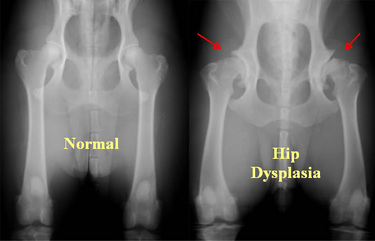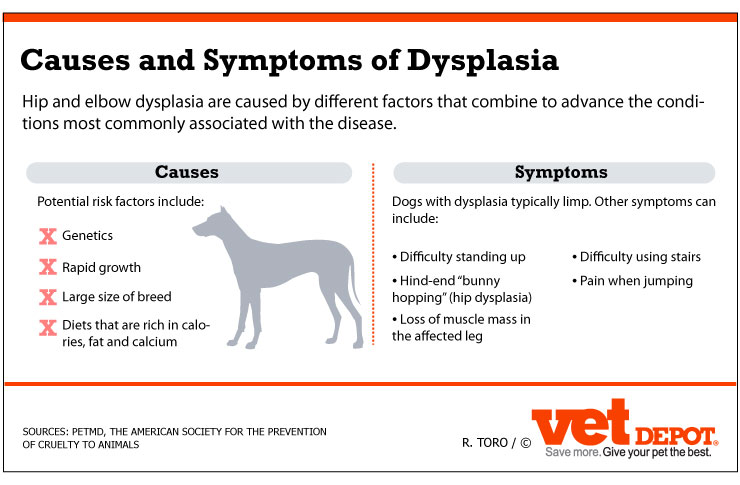 |
| (Image Source) |
Hip dysplasia may be one of the most well-known and well
discussed joint diseases affecting our pets. This condition occurs when the hip
joint is malformed and will not joint normally. The femoral head does not fit
properly into the acetabulum of the pelvic bone. Overtime this will lead to
discomfort and can sometimes alter the normal gait or stride. It is typically associated with large breed
dogs but can affects animals of any size.
 |
| An example of hip dysplasia in the left hip of this dog (Image Source) |
There is a genetic link with hip dysplasia that can be
passed through many generations. When looking for a new pet, if going through a
breeder it will be important to ensure that they have had the hips certified
free from the condition. This will be especially
crucial in large breed dogs. X-rays are
required to assess the hips, and most of the time sedation may be necessary. If
your pet is already symptomatic x-rays can be done at any time to view the
joints. If there are no symptoms and they are being assessed for breading
stock, x-rays are typically done around two years of age. This is when all
growth should be complete and the joints can be adequately assessed. For hips
to be certified, the x-rays are sent to the Orthopedic Foundation for Animals.
In some cases referral may be recommended to an orthopedic
surgeon to see if hip replacement is an option. This is a very invasive and
expensive procedure so most owners prefer management. Once hip dysplasia is
diagnosed there are several options for management. These include joint
supplements such as glucosamine/ chondroitin, pain medications and fish oil
capsules. All of these work to keep the joints lubricated and more comfortable
when our pets are showing symptoms. There are also several diets that have been
shown to help with joint disease. Another big aspect of management to remember
is that these dogs need to be kept lean as any extra weight will put more
pressure on their joints and can cause even more discomfort.
For more information on hip dysplasia please visit the following
website here.


No comments:
Post a Comment